Why does the deer’s coat
look so much darker in the winter?
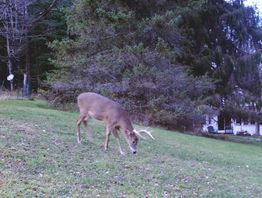
So, as they are part of our daily landscape, I always want to know what changes in their appearance may mean.
When I look out the window and see so many does and their fawns around the house, I notice that their coat is definitely darker than in the summertime when it is kind of reddish. And then quite suddenly, in the fall, it appears to be dark brown.
The reddish, paler brown summer coat seems to be quite thin and the red hair reflects the sun’s energy. This helps deer to keep cool in the summer without the stress of the heat. When the fall arrives with the cool nights, the winter coat begins to grow, due to hormonal changes. This will happen quickly, usually in one or two weeks. The winter coat will protect the deer from the cold winter temperatures and the fierce winds. The winter coat has two layers. The guard hairs are hollow (trapped air is a very effective insulation) and 2 inches longer than the undercoat. The undercoat is very dense and soft, and keeps the deer warm even in the coldest winters.
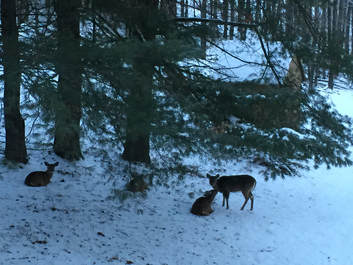
The next morning we set out again and found the buck almost immediately, despite it being covered in four inches of snow. A sharp eyed searcher had spied one of the antlers against the fresh snow. The buck had only run 75 feet (~ 23 meters) into the trees before succumbing. We had all walked repeatedly within feet of it the night before, without seeing it.
I was invited to stay for the dressing out of the animal, so I could be rewarded with a choice cut for my help. Despite having lain on the frozen ground and being covered in several inches of snow for about fourteen hours, when the body cavity was opened and the entrails taken out, the insides still steamed in the crisp morning air. The body core was so well insulated as to seem close to normal.
In fact, we have a grove of pines behind our house in which we see deer take shelter during winter storms. They lay down and chew their cud for hours until the snows end. The accumulating snow builds up on their backs and sides as if on a cold surface. When the storm ends, they stand and shake off the loose dry snow before moving on. It doesn’t melt and adhere to the coat. The winter coat is a complete barrier.
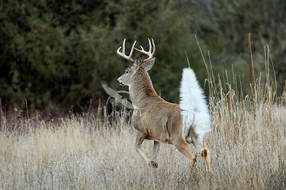
Actually, seasoned hunters will tell you that they don’t look for the shape of a deer’s body. That is a losing gambit. They look for movement or a pattern. The swivel of an ear (each ear can swivel independently almost 270 degrees to survey the surroundings), the twitch of a tail (their tail lays down flat against the buttocks, but may twitch and rise slightly, exposing some white fur when the animal is becoming nervous or curious). This signals others to be more alert.
We call them whitetail deer for this remarkable feature. The black upside down pyramid - some say diamond, shaped patch on the top of the tail - rimmed with a thin band of white fur, is a discreet clue to a relaxed deer standing in the brush. If you are looking for it, you’ll see it long before the body shape attached to it!
Of course, a ‘flagging’ deer may show its presence by partially flagging as it becomes nervous. It will be a small twitch of white in an otherwise grey-brown background. (When alarmed, deer erect their tail vertically, exposing a pure white ‘flag’ to signal other deer nearby, which they will wave from side to side as they run away).
A couple of weeks ago we had an unexpected early snowstorm. When I got up in the morning, I counted several bucks around the house and many does, all close by. On cold nights, they seem to bed down near the house, which gives some protection and probably some warmth from the exhaust plume from our wood stove. This seems fanciful, but we’ve noticed this pattern during storms for many years. Whether the proximity is security from predators or some meager extra warmth, we don’t know, but we see it.
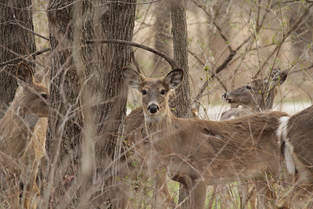
And so the cycle repeats. The does bred in the fall, shed their winter coats and birth new speckled fawns. These fawns are born odorless, and are programmed to instinctively remain absolutely motionless, if their mother bolts away at the approach of a predator. The fawn’s white speckled sides are thought to mimic the sun dappled forest floor. Motionless, they have no odor to betray their location to a predator.
Not everyone is happy about the deer’s success - landscaping, auto insurance, accident fatalities, etc. But by observing them, we can understand them better, and perhaps how we can go forward together?
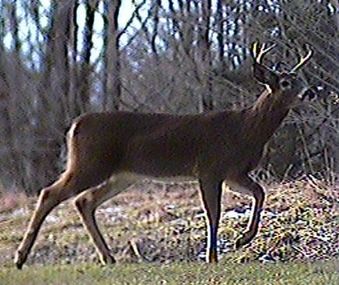
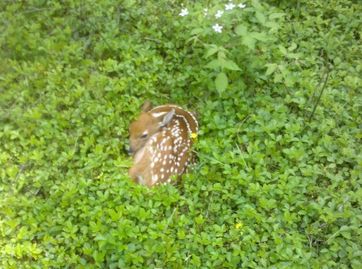
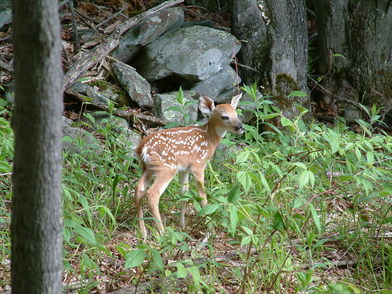
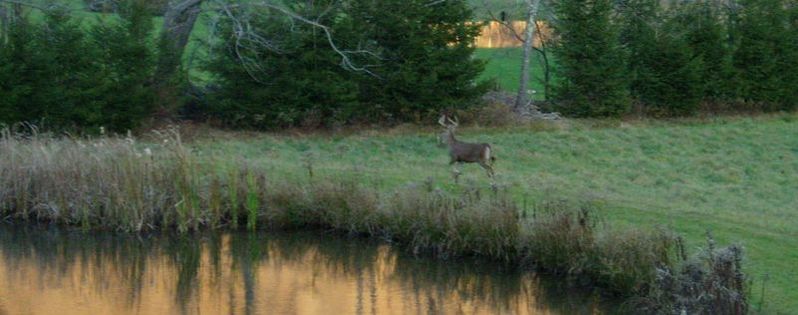
 RSS Feed
RSS Feed